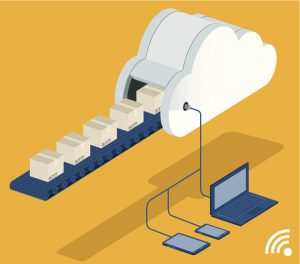Knowing how to improve DevOps can be challenging. But, creating an integrated DevOps toolchain can set organizations apart from the rest. This is because having a well-defined business DevOps journey can reduce errors, improve collaboration and drastically increase speed to market. It’s these pillars of DevOps that can lead to increased revenue. Because, if you can beat your competitors to market and deliver high-quality outputs, customers won’t wait to see if another company “might” deliver a similar product the following month.
DevOps has evolved from being a term reserved for developers or IT operations technicians. Now, it is fundamental within the C-Suite vocabulary. However, adapting to a DevOps culture can be a massive shift for some teams. Indeed, this report by Atlassian and CITE research shows more than 85% of teams face challenges to implement DevOps. Yet 99% of organizations who have implemented, say that DevOps has had a positive impact.
Therefore, to overcome some of these nuances and effectively implement DevOps, we’ve rounded up the top six tips ways to improve DevOps in your business.

1. Remove Barrier To Implement DevOps
Common challenges to successfully implement DevOps include:- Creating a cultural mindset shift
- Deployment complexity
- Deployment cost.
- Governance and lack of skills and training.
Firstly, introduce collaboration early. Any transformation can be unnerving. Particularly when there are multiple moving parts and teams that don’t historically collaborate well. Ensure the right “on-the-ground” collaborators, as well as vision ambassadors, are in the same room. Secondly, start migrating the cultural mindset shift in the early phases and take your team on the same journey. You’ll get more buy-in and support when your team is involved in the early thought process. Consequently, you’ll benefit from the early adoption of better collaboration later on when your DevOps toolkit comes to fruition.
2. Use Agile Testing
Now, once your DevOps dream is implemented, you’ll want to focus on Agile testing. Or, the “shift-left” approach as some Developers refer to it. This phrase comes from the western world, where we read from left to right. Shifting left means we do things earlier in the process. For example, testing early and often.
By focusing on Agile testing as part of the development lifecycle, bugs can be addressed in parallel to build. And, the adoption of a “fail fast, adapt fast” approach can be embedded. Comparatively to testing being completed as part of the final product quality assurance. It is through Agile testing that speed to market can be achieved.
For example, using tools like Xray or Zephyr can enhance team collaboration and also built quality into your product. Additionally, using tools like Selenium or Cucumber enable you to cover almost any test cases available. Furthermore, they transform old manual testers into automated test writers. Ultimately enhancing product quality.
Similarly, by introducing testing at the planning stage and using tools like Jira to manage workflow updates, stakeholders can influence testing criteria and enjoy the ease of collaboration. Also, establishing a centralized reporting system improves update accessibility and creates one source of truth.
3. Consider DevSecOps To Improve DevOps
Adopting DevOps also requires a rethink on how security is managed. Security are almost always the “last to the table” for a new project, or product. However, this creates an uneccessarily repeated scene: Security is involved too late. Then, sales, marketing, product and other stakeholders ask for a “pass”. They don’t want the security team to delay a product or feature release. Next, you have a product in production that your security team hasn’t thoroughly tested. Now, you have risk. And, an impacted culture from the devaluation of what the security team can bring to the product.
As software releases are more frequent in the DevOps approach, introducing security in the early stages of development can help. Now your build keeps abreast of potential breaches and risks. This is quite a cultural change for organizations that typically complete security from the outside in.
Instead, a DevSecOps team practices security stress-testing throughout the lifecycle. Ultimately it leads to a reduction of security incidents despite the speed of a DevOps approach. In particular, by integrating DevSecOps, organizations can benefit from both faster and safer builds.
DevSecOps teams can leverage integrations for Jira and Bitbucket to address security practices. Having the right tools to have an effective DevSecOps team can improves DevOps through better collaboration and security incident management. It also empowers DevOps team to make more informed decisions.
4. Implement Feature Flagging
Feature flags allow more frequent deployments and reduce change failures. Essentially, feature flags are “if statements” in the code base. They allow teams to turn features on and off. These feature flags enable speed in experimentation and avoid bug-filled releases.
What’s more, by integrating your flags with Jira issues, teams can stay updated about the latest flag status. Furthermore, what percentage has been rolled out to customers. Similarly, CloudBees SDA has Feature Management. This enables roll out of specific features to certain part of the user base. Roll out can be based upon geographic location, a percentage of all users, or users that meet other criteria.
Consequently, agile testing can be completed in synchronization and code can be developed accordingly by making flag planning a standard aspect of your feature design,
5. Monitor Everything
The old DevOps adage says “If you want to improve something, you have to be able to measure it.”. Getting a true sense of performance at any given time can be challenging. Especially for teams drowning in data sources. First, introduce observability technology. With this, teams can quickly view, update and manage alerts across all platforms. Additionally, an observability platform is a tool that aggregates data into logs, metrics and traces from applications. Therefore, observability platforms then process that data into events and KPIs that can be leveraged by information teams to measure system performance. This goes well beyond the old days of monitoring CPU and disk utilization. Now, with an observability platform, engineers can see trends, historical data and gleen true insight from information from applications and infrastructure. This ensures teams are not missing critical information that could unbalance the delivery of speed and quality.
6. Process Automation
Automating processes reduces the risk of human error from repetitive tasks. By identifying which processes are ripe for automation in your DevOps journey, your team can focus on what they do best: creativity and problem-solving. Automation can improve DevOps and how you implement DevOps.
Removing tedious and repetitive tasks from your DevOps journey can also increase speed to market and drive revenue. Consider how much costly labor time could be saved from the initial repetitive task. Now consider the labor for correction of those tasks.
For example, by creating self-service facilities and catalogs you also remove the additional need for DevOps to focus on simpler fixes. Also, you empower the wider workforce through self-education. However, these self-service tools require the organization to also adopt the right culture for effective continuous improvement, and continuous delivery (CI/CD) approaches.
Conclusion
To implement DevOps effectively means you can drastically improve speed to market and increased revenue. However, to implement DevOps effectively, you must ensure barriers to cultural change are addressed early. You must also consider that collaboration becomes key, and friction is removed through effective Agile testing, DevSecOps and automation.
When choosing to implement DevOps, you’re already halfway to modernizing your development lifecycle. As such, adopting tools like Atlassian’s feature flagging and Jira can embed better communication and adoption of a shift-left approach.
Need some support to implement or improve DevOps in your organisation? Contact us today for expert support.





